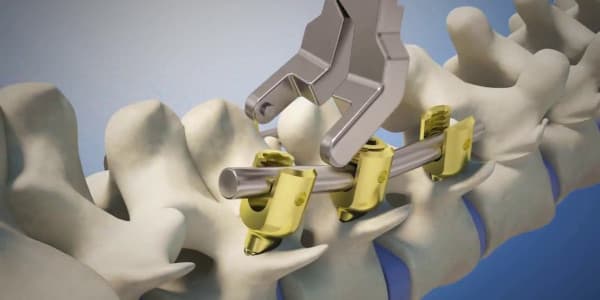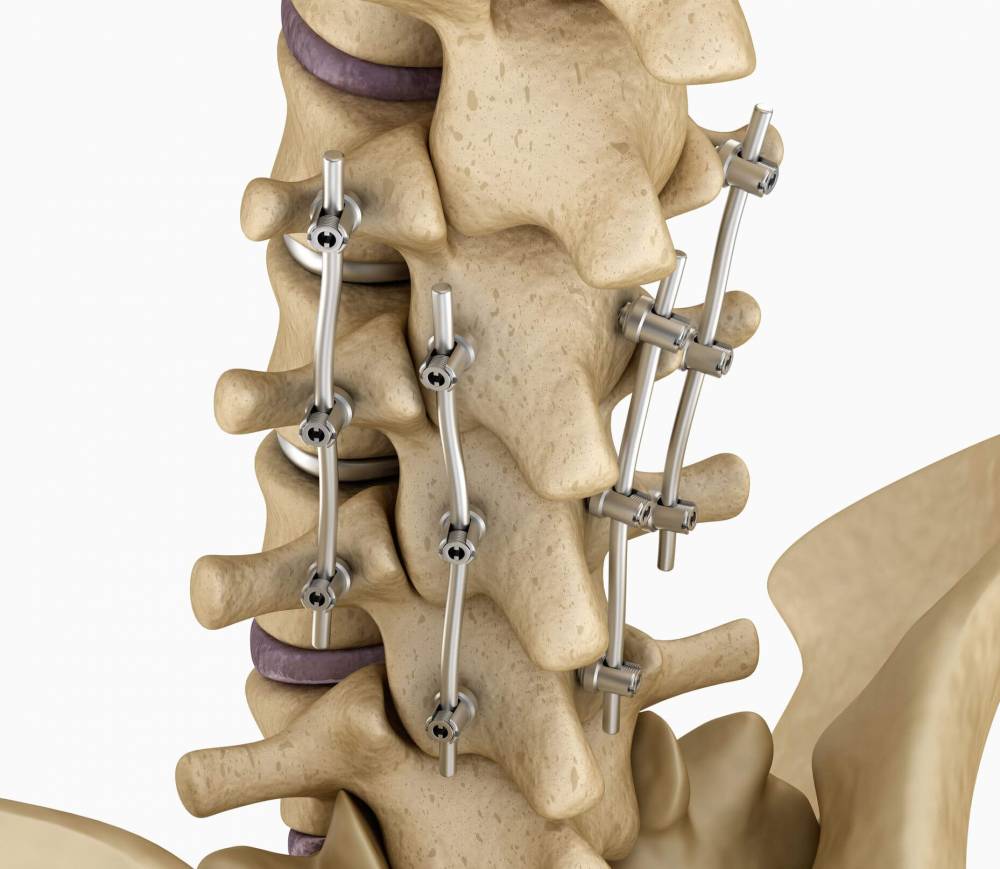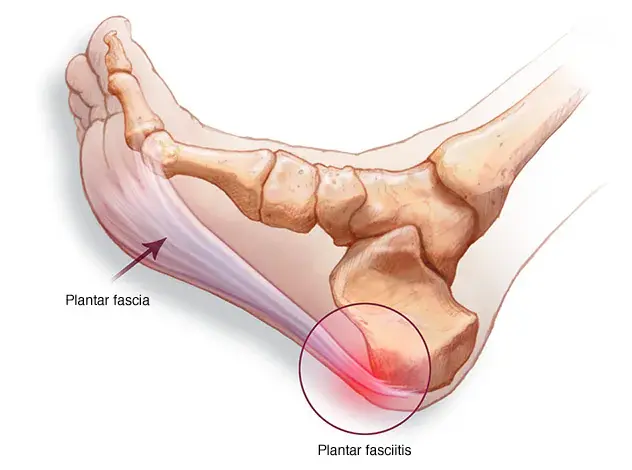Learn about spinal injections and when I can’t take a spinal injection?
 Spinal Injections
Spinal Injections
Spinal injections are a medical procedure that involves injecting medication directly into the area of the spine. Spinal injections are used to provide treatment and relief for a variety of medical conditions. They are most commonly used for pain relief or for delivering medication through the spinal cord, which is the fluid that surrounds the spinal cord and brain. There are different types of spinal injections, including:
- Lumbar (Epidural) Injections: Medication is injected at the lumbar spine level. This type of injection is used to alleviate back pain or provide relief to specific areas of the body.
- Sacral (Caudal) Injections: Medication is injected into the sacral area of the spine. This type of injection can be used for medical and diagnostic purposes.
- Spinal Canal (Intrathecal) Injections: Medication is directly injected into the spinal canal. This type of injection is used to deliver specific doses of medication to the spinal cord, such as pain management or anesthesia.
Spinal injections should be performed by a qualified medical professional, such as a doctor or specialized nurse. The potential benefits, risks, and possible side effects of the treatment should be assessed before deciding on a spinal injection. If you are considering a spinal injection or need more information, it is recommended to consult a specialized healthcare provider.
What Are the Injections Taken in the Back?
Treating back pain is a significant challenge for individuals suffering from chronic back pain. Some people cannot lead their daily lives normally due to this pain. Among the alternative solutions used by doctors to treat their patients is injecting the spinal cavity with medication.
In this article, we will explore some common types of injections administered in the back to treat back pain:
Corticosteroid Injections: Description: These injections contain a mixture of corticosteroids and a numbing medication. Application Method: The doctor uses a small needle to introduce it into the spinal cavity. Mechanism of Action: Corticosteroids help reduce inflammation and alleviate pain, while the numbing medication works to numb the area.
Medication Injections into Nerve Cavities: Description: These injections are used to treat back pain and are also known as spinal medication injections or injections near nerves. Application Method: These injections are administered in the operating room without anesthesia. Mechanism of Action: Medications that cause numbness are given to prevent the patient from feeling pain. An X-ray device is used to pinpoint the target point and place the needle accurately in the right location.
These injections aim to alleviate pain and provide the patient with an improvement in their condition. This procedure may be the best option for patients whose functionality is limited due to pain, as well as those suffering from sleep disturbances due to back pain and have not seen any results from physical therapy or medication. These injections are considered an alternative to surgical procedures that may carry additional risks.
It is important to note that the effects of the injections can last for a period ranging from 3 to 6 months, and the patient may not require repeated treatment if their condition improves. However, it is necessary for the patient to adhere to the doctor’s recommendations and regularly follow up for the progress of their condition.
In summary, spinal medication injections are one of the alternative treatments that can be used to alleviate back pain and improve the condition of patients. These injections are safe and effective, but the doctor should evaluate the patient’s condition and make the appropriate decision before proceeding with the treatment.
Are There Injections for Back Pain?
Statistics show that around 40% of people suffer from back pain, which affects their daily quality of life. Fortunately, there is an alternative solution for treating back pain that doctors can choose for patients, which is medication injections into the spinal cavity.
These injections contain a mixture of corticosteroids and a numbing medication, and they are administered using a small needle into the spinal cavity in the area of pain. These injections are used as an option in the treatment of back pain resulting from spinal conditions such as herniated discs that compress nerves.
In a 36-month study, the results showed that treatment with donated spinal disc cells can provide sustainable improvements in body movement and pain relief. With advancing technology, researchers are also working on developing targeted injections to treat back pain.
Studies have shown that the effects of the injections can last for up to 3-6 months, and if the patient’s condition improves, surgical treatment may not be necessary.
Here is some basic information about this treatment:
Procedure: The needle is inserted into the spinal cavity through the back, with the use of X-ray guidance to ensure proper needle placement. Components: The injection contains a combination of corticosteroids and a numbing medication. Effects: The medication works to alleviate nerve pain associated with back pain conditions. Duration of Effect: The duration of the effect can range from 3 to 6 months and may vary from person to person. Benefits: This treatment can improve body movement and relieve pain associated with the spine. Side Effects: Common side effects may include temporary redness and swelling at the injection site. Preparations: The treatment may require discontinuation of certain medications before the injection and strict adherence to medical instructions.
Despite the hope that spinal medication injections offer for those suffering from back pain, it is always essential to consult with a doctor and discuss available options before making a treatment decision. Each individual’s specific condition may require a different treatment approach, and there may be additional factors to consider.
What Are the Risks of Spinal Injections?
5 Risks of Spinal Needle Injections
Spinal Cord or Nerve Root Damage: Improper needle placement above the dura can result in damage to the spinal cord or nerve roots. This damage can lead to nerve weakness and permanent disability in some cases. Fluid Retention: Among the side effects of steroid injections in the spine is the possibility of fluid retention in the body. The patient may experience bloating and swelling in the face and body due to this retention. Sleep Disturbances and Anxiety: Some patients may experience sleep disturbances and relaxation issues after spinal injections. Chemical imbalances in the body can affect sleep patterns and relaxation. Changes in Menstrual Cycle: Changes in the menstrual cycle are common side effects of spinal steroid injections. Steroids can affect hormones and cause changes in the menstrual cycle in women. Infection Complications: General or local infections in the body or at the injection site may occur. Bacteria or fungi can enter the body and cause inflammation in the areas surrounding the needle.
Most of these risks are rare and occur in very few cases. However, it is crucial that spinal injections are performed correctly and under the supervision of a specialized doctor to minimize any potential risk.
How Long Does the Effect of a Spinal Needle Last?
A spinal needle is a pain relief technique used during childbirth or surgeries. It’s essential for women expecting childbirth or undergoing a cesarean section to have a good understanding of the duration of the spinal needle’s effect. Here, we will discuss how long the effect of a spinal needle generally lasts and important details regarding this topic.
Before we explore the duration of the spinal needle’s effect, there are some crucial points to be aware of:
Individual Variability: The effect of a spinal needle can vary from person to person based on various factors such as age, weight, overall health, and tolerance to anesthesia. Therefore, some individuals may take longer to regain full mobility after the injection. Type of Anesthetic: There are different types of anesthetics used in spinal needles, and these differences can affect the duration of the effect. Some anesthetics may provide an immediate effect, while others may take longer to take effect. Dosage: Adjusting the dosage of the anesthetic also impacts the duration of the injection’s effect. The doctor may modify the dosage based on the patient’s condition and the severity of the associated pain.
In summary of the above points, it can be said that women undergoing childbirth or cesarean sections with a spinal needle need to understand that the duration of the injection’s effect varies from person to person and depends on several factors.
Duration of Spinal Needle Effect: Typically, the effect of a spinal needle can last anywhere from approximately 2 to 6 hours. However, some individuals may feel the effects of the injection for a longer period, up to 24 hours in some cases, and it may last for a few days.
Nevertheless, after the effect of the injection wears off, a woman may experience some pain and numbness in the anesthetized area. Full activity usually returns to the spine and the anesthetized area after a few hours of light exercise and movement.
In general, new mothers should speak to their attending physician before deciding on using a spinal needle and express any concerns about the duration of its effect. The doctor can provide more accurate information and guidance on the subject based on your individual medical history and expected childbirth conditions.
Avoid relying on common misconceptions and inaccurate news. Always consult with a specialized doctor and trust their expertise for accurate and precise information about the duration of a spinal needle’s effect.
Final Advice: Please ensure you get sufficient rest and follow your doctor’s instructions after surgeries or childbirth. Proper medical support and guidance are key to a comfortable and speedy recovery.”
What Is a Cortisone Shot for the Back?
If you’re experiencing back pain, your doctor may recommend a cortisone shot as part of your treatment plan. What is a cortisone shot for the back? How does it work? What are the potential benefits of this treatment? Let’s take a brief look at this topic in this list.
- Description: A cortisone shot for the back is a needle through which an anti-inflammatory substance derived from cortisone is injected, usually mixed with a local anesthetic. This substance is injected around nerves and joints in the back area.
- Benefits: While a cortisone shot for the back does not provide a permanent cure, it can help alleviate back pain and inflammation. It assists in reducing inflammation around nerves and tissues, leading to pain relief.
- Conditions that May Benefit: A cortisone shot for the back is used to treat a variety of common spinal column problems, including:
- Herniated discs.
- Spinal stenosis.
- Muscle and joint pain.
- Nerve pain due to nerve inflammation.
- Possibilities and Warnings: Although most people benefit from cortisone shots for pain relief, some precautions should be taken into account:
- The doctor may suggest multiple consecutive injections for the highest effectiveness.
- Some potential side effects may include temporary weight gain or temporary high blood pressure.
- Cortisone shots are typically not a replacement for long-term treatment; they are used as a tool to alleviate temporary pain.
In conclusion, it is essential to consult with your specialized doctor before undergoing any treatment procedures. Remember that a cortisone shot for the back may help alleviate temporary pain but is not a definitive solution for spinal column problems.
When Can’t I Have a Spinal Needle?
- If You Have Preexisting Health Issues: The use of a spinal needle may be contraindicated if you have spinal deformities or other health problems that affect the safety of the procedure. You should inform the anesthesiologist of any health issues you have before using it.
- If You Are Taking Certain Medications: There are some medications that may interact with the effects of a spinal needle and impact your safety. In such cases, the anesthesiologist may advise against its use if you are taking these medications. Make sure to inform the doctor about any medications you are taking before the procedure.
- If You Have a History of Allergies or Side Effects: The use of a spinal needle may be contraindicated if you have a history of allergies to local anesthesia or have experienced negative side effects in the past when using it. You should report any previous allergies or side effects you have encountered after its use.
- If You Prefer Other Pain Relief Methods During Childbirth: If you have specific preferences for other pain relief methods during childbirth, using a spinal needle is not mandatory. You can consult with your obstetrician about available alternatives and choose the method that suits you best.
When considering the use of a spinal needle for pain relief during childbirth, you should ask your obstetrician to determine if there are any exceptions or conditions that prevent its use and what alternatives are available in case it cannot be used. Always rely on expert consultation and follow their guidance for the best results and the safety of both the mother and the baby during childbirth.
Does a Spinal Needle Cause Paralysis?
During the administration of a spinal needle to a pregnant woman, it is crucial to ensure that it is done correctly and professionally to avoid any complications. One of the potential complications includes paralysis resulting from a significant and egregious error during the injection process.
According to the experiences of doctors and experts in this field, there are no reports confirming cases of paralysis resulting from spinal needles for pregnant women. This includes numerous years of data globally.
A spinal needle during spinal anesthesia is not a threat to paralysis. The procedure involves placing a needle in the patient’s back under local anesthesia, and this needle is used to alleviate pain during surgery or childbirth.
A rare mistake can occur during the process of administering spinal anesthesia, which may lead to the leakage of cerebrospinal fluid surrounding the spinal cord. When there is cerebrospinal fluid leakage, it can cause a severe headache that lasts for a certain period. However, in the case of this rare error, paralysis resulting from a spinal needle is extremely rare.
It is of utmost importance to ensure the selection of a qualified and experienced doctor when it comes to spinal needles and spinal anesthesia. Specialized doctors in this field have the knowledge and skills necessary to perform the procedure safely and effectively.
If there is any concern or doubt about the correct administration of a spinal needle, it is essential to contact the treating physician immediately. The doctor is the most capable of providing appropriate advice and guidance.
Review medical evidence and consult qualified physicians for the most accurate, up-to-date, and detailed information on this topic.



















